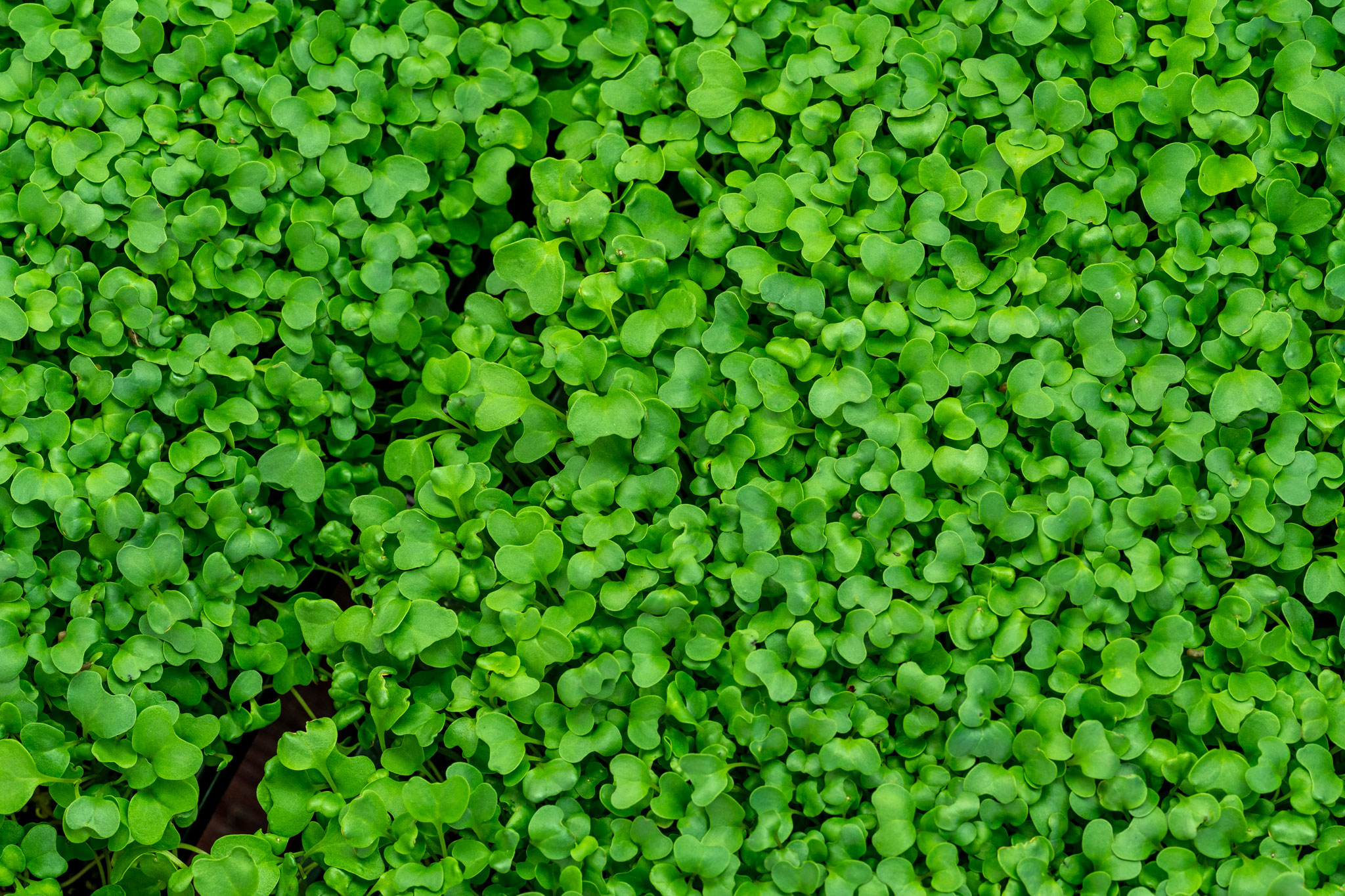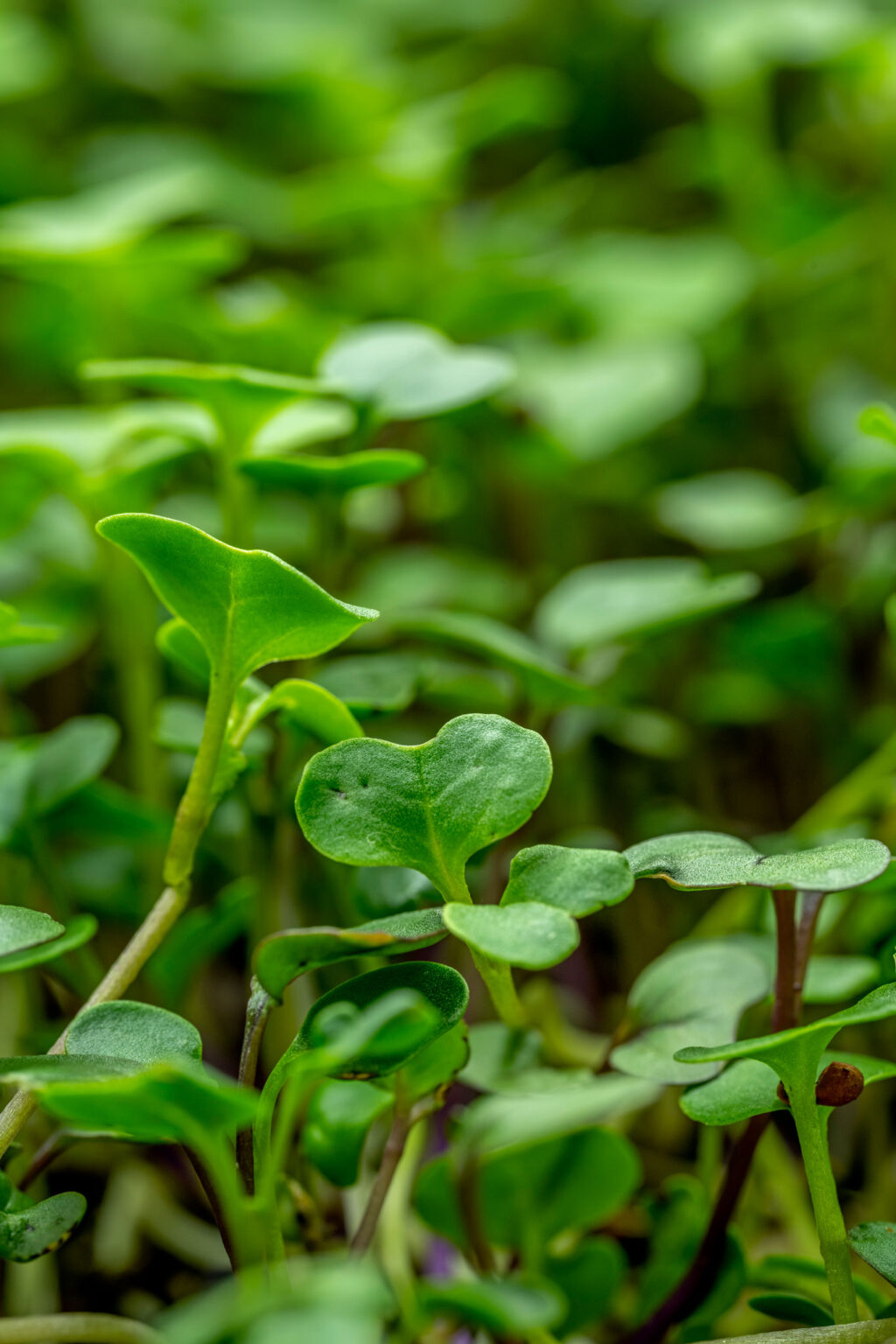Microgreens are the tender shoots of salad greens and veggies that are grown from seed and harvested when their first leaves have formed. Not only are they pleasant garnishes to many dishes, but they are also rich in potassium, iron, antioxidants and other healthy nutrients. Microgreens first took root in the restaurant world, but these days, you can find them in grocery stores, at farmers’ markets, and even as grow-at-home kits!
[adrotategroup=“1”]
» The Microgreen Story
In 1992, Virginia hydroponic tomato farmer, Michael Clark, was struggling to retain restaurant customers on the East Coast and looking for ways to diversify. Chef Craig Hartman commissioned Clark to grow baby leafy greens for salads in his restaurant, but Mike had never grown baby greens. His first delivery was a 5-pound bag of tiny, spindly green shoots. Never one to turn down local produce, Hartman added the not-baby-greens to his menu that day. A food writer dining that evening asked what was in her salad, and Hartman coined “microgreens” on the spot. Her article in The Nation’s Restaurant News spread the word throughout the industry, and over 300 farmers learned more about these little greens from Clark at a hydroponic seminar shortly after. Today, Clark still grows tomatoes and microgreens – and baby greens! – and he still works closely with Chef Hartman.

» Microgreens Today
Microgreen farming and production has increased significantly since the ‘90s and is predicted to continue growing by 10% annually. The Chef’s Garden was one of the early companies to begin large production and shipping to culinary professionals and individuals. Today, it remains one of the top producers in the U.S. alongside Fresh Origins, AeroFarms and Farmbox Greens. But there is also a wealth of smaller local and regional producers throughout the country growing for customers and restaurants alike.
» How Microgreens Grow
Microgreens are not sprouts. Sprouts are seeds, like beans and grains, that are germinated and sprouted using water. The warm moisture encourages the growth of certain food poisoning bacteria, if not cared for properly. Microgreens are grown in either potting soil or a soilless substrate. The most common is coconut coir, a natural fiber waste product of coconut harvesting. Due to the dryer environment, microgreens don’t carry the same risks as sprouts.
If you start your vegetable garden from seed, you’re familiar with the terms “first leaves” and “true leaves.” Microgreens are cut after a plant’s first leaves have formed and before its true leaves have a chance to grow. The result is a delicate, flavor-packed leafy shoot that is not only visually appealing but texturally diverse as well. Popular varieties include broccoli, arugula, radish and sunflower, but a seed mix is efficient and diverse. Less common and uniquely flavorful varieties are corn, beet, watercress and collards.

» Grow Your Own
It’s convenient to buy a pack of microgreens at the store, but growing your own at home, indoors, year-round is easy. Check your local nursery, ask a microgreen grower, or find online a microgreens growing kit. Some are even self-watering and most will fit nicely on a windowsill! You can also build your own.
» What You’ll Need
• seeds
• a seed tray, at least 1-inch deep
• a growing medium (potting soil, coconut coir, or other soilless medium)
• a sunny location or a grow light/lamp
• a watering can and consistent watering availability
• labels
• a sharp chef’s knife or sharp scissors
Fill your trays with your growing medium, smooth them out, and add water until moist but not wet. Spread your seeds over the entire surface, add a little more of the soil or soilless on top, and gently press the seeds down. Cover with a clear dome, plastic bag, or plastic wrap and allow to germinate – you can uncover once the first leaves have begun to form. Water as needed to keep the trays moist. Once the shoots are a few inches high and the first leaves have fully formed, but before the true leaves have sprouted, harvest by cutting just above the soil. If needed, rinse lightly and dry on a paper towel. Enjoy and repeat! N
By S. Michal Bennett
Photography By Joel Riner
As Featured In: Home + Garden 2023


